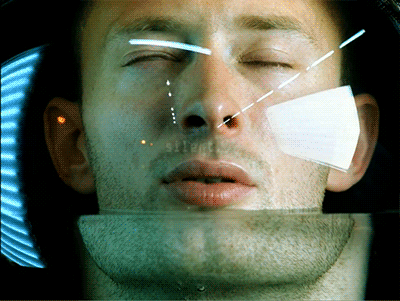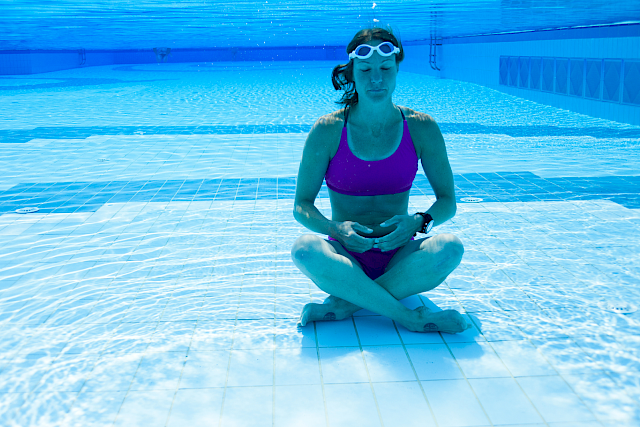
Finding out what you’re capable of when discomfort kicks in.
A while back during a California heatwave, my wife and son and I took a weekend getaway to stay at a hotel with a pool. The plan was to stay as cool and submerged as possible.
In the process of fulfilling that plan, my son and I started a challenge to see how long we could hold our breath underwater.

He went first and posted a time of 22 seconds.
I went next and thought I could easily go at least a minute. I went under and held out for what felt like a really long time. I figured it had been at least a minute when I started getting uncomfortable, so I popped up.
“45 seconds.”
What? That’s it?
He went again and improved to 30 seconds.
It was then my turn, and I was feeling even more determined to hit that minute mark. This time, while I was underwater, I could hear my son chatting with someone nearby who was interested in our experiment. He told them what our results were and started calling out how long I’d been under.
I heard him say, “40 seconds”, as I felt that same discomfort kicking in.
“45 seconds.”
Just chill out.
“50 seconds.”
Starting to hurt a bit, but I’m so close!
“55 seconds.”
Almost there!
“60 seconds!”
“61, 62…”
I popped up.
I took a big gasp. My son was impressed. I felt pretty awesome.
We met back up with my wife and told her about the results. As one of the most determined people I’ve ever met, and never one to back down from a challenge, she couldn’t resist taking a turn.
First try, 26 seconds. She popped up and appeared legitimately out of breath.
Second try, 44 seconds. A familiar look of determination was setting in.
Third try, 1 minute and 9 seconds!
My son, feeling challenged and inspired, decided to go again. 45 seconds!
So, to tally those results from first try to last:
- Me: 45 seconds to 62 seconds = 37% increase
- My son: 22 seconds to 45 seconds = 104% increase
- My wife: 26 seconds to 69 seconds = 165% increase
Those are some pretty substantial improvements.
What was going on here?

Starting from the very first try, we all took the deepest breath we could and held out until we felt like we had to pop up for air. Yet we all managed to go much longer on our following attempts just minutes later.
Did our lung volumes suddenly increase from one attempt to another? No.
Did we learn some secret breath-holding hack? No.
Did someone hold our heads underwater against our will? No.
Did a little practice help? Yes.
Did setting a goal each time of trying to beat our previous personal best help? Yes.
Did getting feedback on progress during and after each attempt help? Yes.
Did watching each other’s improvements help? Yes.
Did our confidence grow and keep us calm on each subsequent attempt? Yes.
Looking at all those factors, you can see that nothing changed about our physical makeup or who we were as people.
When I held out for over a minute, I felt the exact same discomfort I felt when I popped up after 45 seconds. In fact, as I kept going, the discomfort definitely increased.
The differences were completely mental.
The level of discomfort that made me stop the first time, wasn’t a true indicator that I had to stop. It was simply an indicator that I should consider stopping.
The first time I listened to that indicator immediately. So did my son and my wife. Without talking to each other about what we’d felt, we all reacted the same way. Our bodies indicated a sense of discomfort and we listened!
But on the subsequent attempts, we all made our own decisions to move past that indicator.
As it turned out, that first discomfort indicator that I should stop was 37% too early. Probably even more.
For my son, his first indicator that he should stop came 104% too early.
For my wife, it was 165% too early.
On the following attempts, we were able to tap into a confidence that we could keep going. We realized that we’d easily survived those first attempts without any problems. We told our brains that the initial sign of discomfort didn’t have to equate to stopping.
By flipping that mental switch, and not treating that initial discomfort point strictly as “the end” we substantially changed what we were capable of doing.
What’s the takeaway for entrepreneurs?

Our bodies give us indicators in the form of physical and mental discomfort for a reason. We’re wired to protect ourselves and preserve energy so that we can survive over the long run.
However, because we’re not generally operating in actual survival situations, those indicators have to be taken with a grain of salt.
The point of the breath-holding story isn’t about achieving peak performance or pushing ourselves to the extremes in the face of true survival or danger. It’s about identifying and properly evaluating the signals our bodies are sending to us and recognizing that we have control over how we respond to them.
Within the bounds of totally reasonable amounts of any activity including work, exercise, or some other challenge, we’re constantly confronted with moments of discomfort.
It might be discomfort around getting started on a project. It might be hitting a wall on a particularly challenging moment in the middle of a task. Or it might be that final push to complete the whole thing.
All of those situations — starting something, overcoming specific challenges, finishing something — can trigger discomfort signals in a big way. They make us want to stop so that we can preserve energy, avoid pain and discomfort, do something, anything, that’s easier.
We can be 100% convinced we’ve hit our limit. We tell ourselves we took it as far as we could and just had to stop. It’s in the spirit of survival!
But what if the truth was that you still had 37% more you could give before approaching any real danger or risk. Or 104%? Or 165%?
The reality is you probably do. Maybe it’s a little less than that, maybe it’s way more.
Over time, we all discover more about what our limits really are, but it’s only possible by pushing past what feels comfortable. And doing it repeatedly.
Luckily we get opportunities to test out those limits every single day.
Give yourself a test
The next time you’re pushing yourself to finally work on that business idea, exercise a little more, or finish that article, and you feel that urge to stop and do something else, ask yourself a few questions:
- How much have I practiced this to know what my limits actually are?
- Have I set specific goals around starting, working through, or completing this task?
- What feedback have I gotten that indicates whether I should stop or keep going?
- Who else have I seen succeed at this that might change my perception of what’s possible?
- What would happen if I just kept going a little longer?
And then, unless there’s some reason to think your survival is truly at risk or you’re literally holding your breath, keep at it for another 10 minutes. See what happens.
Was it really that difficult? Was it critical for you to stop when you first thought? Did you get more done than you originally thought you could? Could you go an extra 20 minutes next time if it meant getting past the challenge of what you’re working on?
We’re all capable of a lot. And specifically, we’re capable of way more than we think. Our brains and bodies want to help us survive, but to accomplish big or important tasks you have to be willing to work past survival mode.
By paying attention to those signals of discomfort and questioning them rather than just taking them at face value, you may get some big surprises about what you’re actually capable of doing.
Click below for a free workbook to help set goals for your brand.


